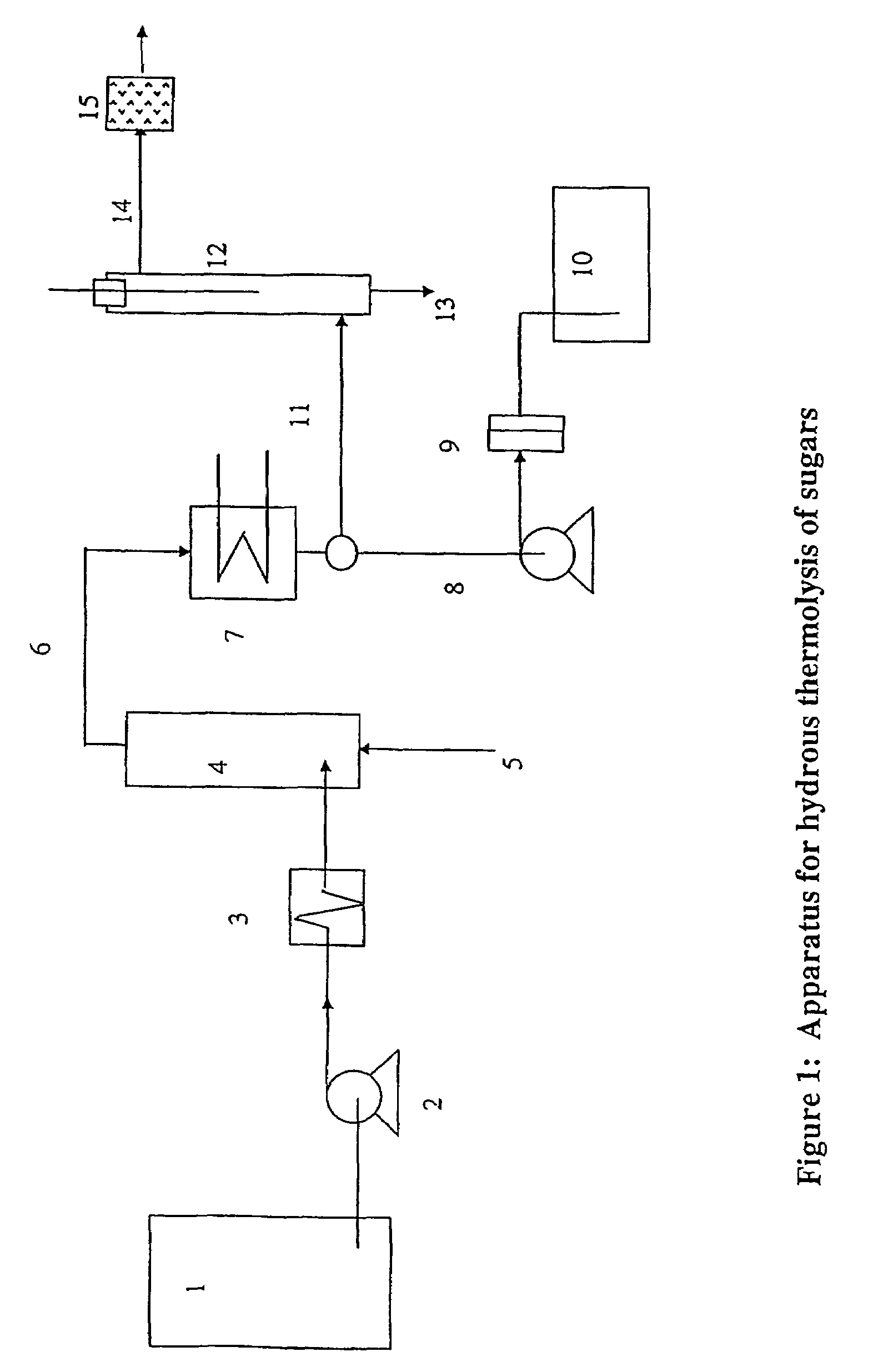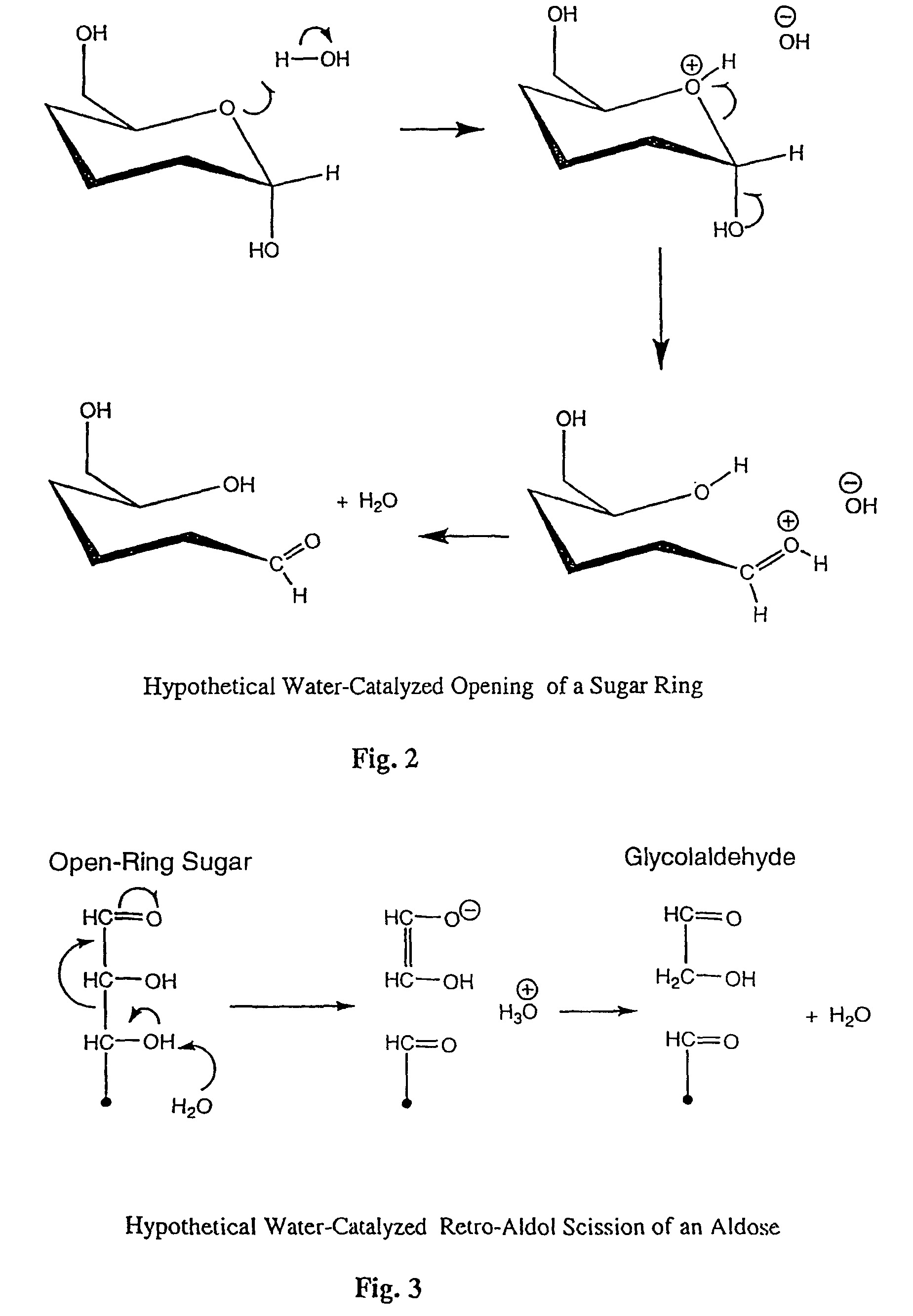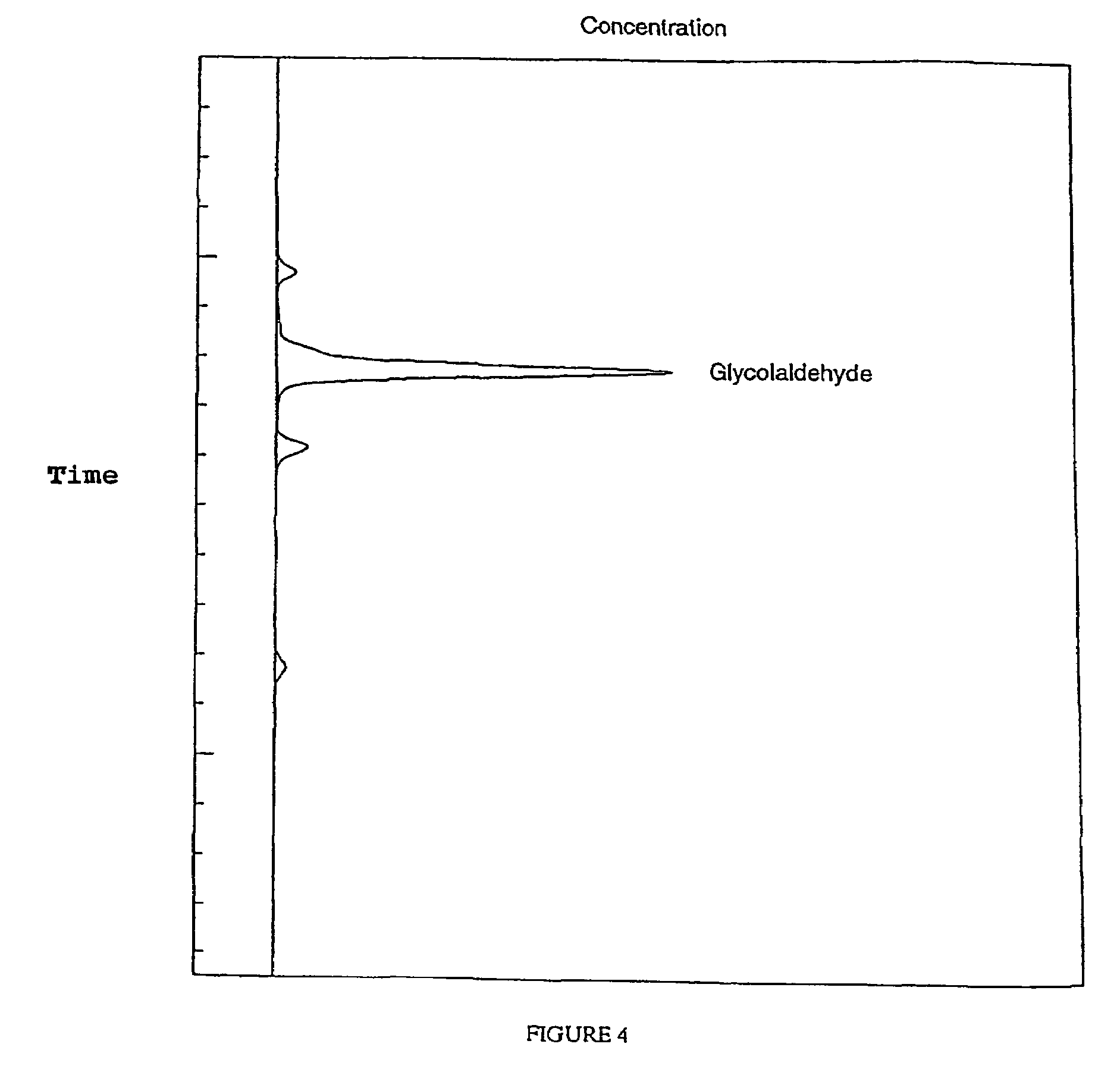Production of glycolaldehyde by hydrous thermolysis of sugars
a technology of hydrous thermolysis and glycolaldehyde, which is applied in the preparation of carbonyl compounds, heterocyclic compounds, sweetmeats, etc., can solve the problems of inability to meet inability to meet industrial use requirements, and inability to achieve large-scale production of glycolaldehyde, and achieves rapid water quenching and enhancement of glycolaldehyde yield. , the effect o
- Summary
- Abstract
- Description
- Claims
- Application Information
AI Technical Summary
Benefits of technology
Problems solved by technology
Method used
Image
Examples
example 1
[0044]An aqueous solution of glucose is subjected to hydrous thermolysis in the apparatus described in FIG. 1. The results are collected in Table 1. The feed consisted of an aqueous solution of density 1.158 g / cc containing 34% by weight (anhydrous glucose basis) of Glucose Monohydrate.
[0045]The three runs produced on average the extremely low yield of only 0.14 wt % of solids, “char”, as filtered out from the condensate. This may be compared with the results of Underwood et al. in U.S. Pat. No. 5,397,582, who obtained 2.5% char from powdered dextrose, some twenty times as much. Between 85–89% of the feed was recovered as condensate. The yield of glycolaldehyde was highest at 528° C. where it was 55% on an anhydrous glucose basis. This may be compared with the yield of only 21.3% from powdered dextrose reported by Underwood et al. The condensate was a clear pale amber solution indicating a lack of coloured contaminants such as furans and like organics.
[0046]
TABLE 1Results for Exampl...
example 2
[0049]This example illustrates the influence of the chemical character of the sugar on selectivity to glycolaldehyde. The ketose sugar, fructose (Aldrich Chemical Co., 98%), was subjected to hydrous thermolysis in the apparatus of FIG. 1 at varying temperatures. The feed solution was of density 1.146 gram / cm3 and contained 32.45% by weight of fructose. The product from the EP and the condensate were combined to give a total liquid product, the composition of which was then analyzed as a whole. Summary data for the yields on a dry fructose basis are displayed in Table 2.
[0050]
TABLE 2Results for Example 2 (Fructose)Thermolysis Temp. (° C.)571534Yields (Weight % Fructose)Gases11.798.77SolidsTraceTraceWater13.6512.65Organics64.5270.21Total above89.9591.63FructoseGlyoxal2.833.07Glyceraldehyde1.55Methylglyoxal10.886.60Glycolaldehyde21.412.28Formaldehyde11.619.83Acetol3.882.10GasesCarbon Monoxide7.105.70Carbon DioxideNullNullMethane0.24TraceEthene0.26TraceVolatiles4.193.07
[0051]There is a ...
example 3
[0054]In this example, the disaccharide sucrose, which is a glucosyl fructoside combining the glucose and fructose moieties, is used as a feedstock. Sucrose (Lantic Sugar Ltd.) was subjected to hydrous thermolysis in the apparatus of FIG. 1 at varying temperatures.
[0055]
TABLE 3Results for Example 3 (Sucrose)Thermolysis Temp. (° C.)550513Mass of Solution Fed (grams)163.0161.0Products (grams)Liquid Condensate141.09140.42EP catch (~20% water)7.528.44Amount absorbed on Drierite4.444.32Carbon Monoxide3.202.01Ethene0.10Other Volatiles2.120.90Mass Recovered158.57156.0Concentration in Condensate (Wt %)Glyoxal0.941.79Glycolaldehyde13.4512.64LevoglucosanTraceTraceFormaldehyde5.153.47Acetol1.080.63Water72.573.0Total93.191.5Yields (Wt % Sucrose)Glyoxal2.434.76Glycolaldehyde34.7433.60LevoglucosanTraceTraceFormaldehyde13.309.22Acetol2.791.67
[0056]The feed solution was of density 1.15 gram / cm3 and contained 34.8% by weight of sucrose. A complete mass balance was carried out and the condensate anal...
PUM
| Property | Measurement | Unit |
|---|---|---|
| diameter | aaaaa | aaaaa |
| diameter | aaaaa | aaaaa |
| temperature | aaaaa | aaaaa |
Abstract
Description
Claims
Application Information
 Login to View More
Login to View More - R&D
- Intellectual Property
- Life Sciences
- Materials
- Tech Scout
- Unparalleled Data Quality
- Higher Quality Content
- 60% Fewer Hallucinations
Browse by: Latest US Patents, China's latest patents, Technical Efficacy Thesaurus, Application Domain, Technology Topic, Popular Technical Reports.
© 2025 PatSnap. All rights reserved.Legal|Privacy policy|Modern Slavery Act Transparency Statement|Sitemap|About US| Contact US: help@patsnap.com



